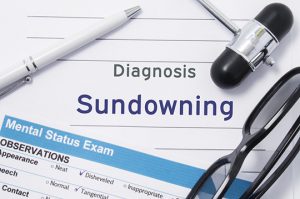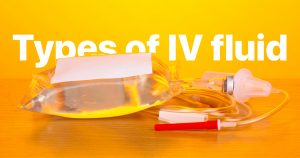When the NCLEX-NGN launches April 1, 2023, candidates are going to see some significant changes. We’ve told you what to expect in these articles: NCLEX Is Changing: Learn More! and NCLEX-NGN and the Six Clinical Judgment Skills.
There will also be three Evolving Case Studies included as part of the examination. Each case study will progress through six questions that mirror the Clinical Judgment Skills.
And yet another BIG change? How NCLEX-NGN will be scored! There will be three types of scoring models (also called rules) from now on:
- 0/1 Scoring Model
- +/- Scoring Model
- Rationale Scoring Model
What stays the same? The 0/1 Scoring Model
The 0/1 Scoring Model is the classic way of scoring test items. You get 1 point for each correct (key) response and 0 points for incorrect (distractor) responses. This is called dichotomous scoring. Total score for 0/1 is the number of correct (key) responses. Incorrect responses ARE NOT penalized by deducting points.
Traditional multiple-choice questions use the 0/1 Scoring Model; here’s an example:
Question:
Most of our calories should come from
Options:
vitamins.
carbohydrates.
fats.
protein.
Key:
carbohydrates
If you select ‘carbohydrates’, you receive 1 point. If you select a distractor, you receive 0 points. Current and future multiple-choice test items will continue to use dichotomous scoring. This makes sense, since there is only one key response for this type of test item. Your selection is either correct or incorrect.
The 0/1 Scoring Model is also used on new NCLEX-NGN test items
Other types of new NGN multiple-choice items will also be scored with the 0/1 model. Here are more examples:
Matrix Multiple-Choice: Each row is scored as an independent multiple-choice, using the 0/1 model. All the rows are summed up to get a total score for the test item. The maximum score is the number of rows in the test item.
Assessment Finding | Improving | No Change | Declining | Points | Correct or Incorrect |
RR 16 | X | 0 | Incorrect | ||
BP 120/80 | X | 1 | Correct | ||
SpO2 90% | X | 1 | Correct | ||
Oriented x 4 | X | 1 | Correct | ||
Ambulating | X | 1 | Correct |
Total rows = 5 Correct Rows = 4/Score = 4 Incorrect Rows = 1/Score = 0 TOTAL SCORE = 4
Multiple Response Select N: You are asked to select a specific number (N) of options. If you try to select more than the stated number, you will first have to unselect one of your choices.
Question:
Select 3 complications the client is at risk for developing:
Complication | Select | Points | Correct or Incorrect |
Pneumonia | X | 1 | Correct |
Heart disease | |||
Anemia | X | 0 | Incorrect |
Peptic Ulcer | X | 1 | Correct |
Kidney failure |
Total selections/possible points = 3 Key responses = 2 Incorrect response = 1 TOTAL SCORE = 2
Drop-Down Cloze: This type of test item asks you to select 1 or more options from a drop-down to complete a sentence or paragraph. Each drop-down can have 3-5 options.
Question:
The nurse suspects the client has a diagnosis of type 1 diabetes because of __________(1) and __________(2). Select one from each drop-down.
(1) | Options | Select | Points | Correct or Incorrect | (2) | Options | Select | Points | Correct or Incorrect |
Obesity | Lack of thirst | X | 0 | Incorrect | |||||
Polyuria | X | 1 | Correct | Polyphagia | |||||
Insomnia | Infection | ||||||||
Skin rash | Depression |
Possible points = 2 Key responses = 1 Incorrect responses = 1 TOTAL SCORE = 1
Drag and Drop Cloze: Similar to the Drop-Down Cloze, but you drag your selections from a well to the blank. There can be more than one well; if so, each well is color-coded so you know where to drag and drop your selection. The number of possible points depends on the number of blanks.
Question:
After reviewing the data, the nurse recognizes that the client may be experiencing __________(1), __________(2), and __________(3).
Possible Diagnoses | Select | Points | Correct or Incorrect |
Hypovolemic shock | |||
Myocardial infarction | X | 1 | Correct |
Pancreatitis | |||
Allergic reaction | |||
COVID-19 | |||
Liver failure | X | 0 | Incorrect |
Appendicitis | X | 0 | Incorrect |
Drug overdose |
Possible points = 3 Key responses = 1 Incorrect responses = 2 TOTAL POINTS = 1
NEW! The +/- Scoring Model will give partial credit -- even on SATA!
The new NGN Scoring Rules, called polytomous models, will extend the 0/1 rule by giving partial credit to items with multiple points. This will benefit candidates who select some or most of the key responses, because they will still get points for the correct answers.
The +/- Scoring Model is used when:
- You are instructed to select an unspecified number of options, such as Select-All-That-Apply (SATA)
- You are allowed to over-or under-select responses
The maximum number of points = the number of correct options. The minimum number of points = 0. (You can’t get a negative score.)
Select-All-That-Apply (SATA) (Also called Multiple Response Select-All-That-Apply) test items will now grant partial credit! Before NCLEX-NGN, all SATA test items were scored either correct or incorrect. If you correctly selected all but one of the options, you did not receive any points. Now scoring will reward keys, but not deduct for the incorrect distractors.
Question:
At a community health fair, the nurse gives a presentation on childhood choking risks. Which foods should parents AVOID for children under 3-years-old? Select all that apply.
Options | Selection | Points | Correct or Incorrect |
Ground beef | X | 0 | Incorrect |
Popcorn | X | 1 | Correct |
Marshmallows | |||
Hot dogs | X | 1 | Correct |
Cooked carrots | X | 0 | Incorrect |
Grapes | X | 1 | Correct |
Possible points = 4 (popcorn, marshmallows, hot dogs, grapes) Key responses = 3
Incorrect responses = 1 TOTAL SCORE = 3
Besides SATA, several other new test items will be scored by the +/1 scoring model.
Highlight Text: With this new type of test item, you read a paragraph and click to highlight text that answers the question. There can be a maximum of 10 possible options to highlight, but some are distractors. You’re able to select and unselect options.
Question:
Click to highlight findings that indicate the client is not progressing as expected.
Nurses’ Notes
Post-op day #2 after uncomplicated splenectomy. Client is ambulating with minimal assistance 1-2 times a day. (✔) Vital signs stable. Breath sounds clear with left chest tube in place (X), attached to closed-chest drainage system. Client refuses to use incentive spirometer, (✔) states it causes pain on the left side. Client utilizes prescribed PCA device at maximum self-administration and is requesting a higher dose. (✔) Continues to experience occasional nausea with some vomiting. (✔) Adequate urine output. (X), Abdominal surgical incision site with dressing is clean, dry, and intact. No redness, edema, or drainage noted.
Possible points: 6 Key responses: 3 Incorrect responses: 2 TOTAL SCORE = 1
Matrix Multiple Response: This type is more complex than the Multiple Response described above. A Matrix Multiple-Response will have 4+ rows and 2-10 columns. Each column must have at least one response. A row can have 0 to all answers. You can select as many options as applies for each column.
Question:
For each finding, click if the finding is an indicator of bowel obstruction, appendicitis, or ruptured spleen. Each finding can be consistent with more than one diagnosis.
Client Finding | Bowel Obstruction | Appendicitis | Ruptured Spleen | Points | Correct or Incorrect |
Loss of appetite | — | X | 0 | = Missed | |
Increased pain | X | — | X | 1 | = Missed |
Bowel pattern | — | 0 | = Missed | ||
GI symptoms |
Row 1 = 0 points Row 2 = 1 point Row 3 = 0 points TOTAL SCORE = 1
Rationale Scoring Model: For ‘Cause and Effect’ Test Items
The final type of scoring, the Rationale Scoring Model, is similar to the 0/1 model in that you must get all parts of the test item correct in order to get points. The test item is ‘paired,’ meaning the key response(s) are based on a full understanding of the information provided in the test item. All parts of the test item must be answered correctly to earn points. The Rationale Scoring Model uses drop-down boxes and drag-and-drop.
A Dyad test item has two parts: X and Y. If both are answered correctly, 1 point is given.
- The nurse must do X because of Y
- A client is experiencing X as evidenced by Y
Question: X and Y correct
The client is at highest risk for developing __________(1) as evidenced by__________(2).
(1) | Select One | Correct or Incorrect | (2) | Select One | Correct or Incorrect | Points |
Stroke | Vital signs | 1 | ||||
Pneumonia | GCS | |||||
Heart attack | SpO2 | Correct | ||||
Hypoxia | Correct | Skin turgor |
Question: X correct, Y incorrect:
The client is at highest risk for developing __________(1) as evidenced by__________(2).
(1) | Select One | Correct or Incorrect | (2) | Select One | Correct or Incorrect | Points |
Stroke | Vital signs | Incorrect | 0 | |||
Pneumonia | GCS | |||||
Heart attack | SpO2 | |||||
Hypoxia | Correct | Skin turgor |
Question: Both X and Y incorrect:
The client is at highest risk for developing __________(1) as evidenced by__________(2).
(1) | Select One | Correct or Incorrect | (2) | Select One | Correct or Incorrect | Points |
Stroke | Vital signs | Incorrect | 0 | |||
Pneumonia | GCS | |||||
Heart attack | Incorrect | SpO2 | ||||
Hypoxia | Skin turgor |
A Triad test item has three parts. If all are answered correctly, 2 points are given. The format is the same as the Dyad, with one more option. All three options must be correct to receive points.
Summary of the NCLEX-NGN Scoring
Three scoring rules will be used on the upcoming Next Generation NCLEX (NCLEX-NGN):
- 0/1 Scoring used when candidate is instructed to ‘Select N’
- +/- Scoring used when candidate is instructed to ‘Select All’
- Rationale Scoring used when ‘Cause’ and ‘Effect(s)’ are tightly coupled
 By
By 



